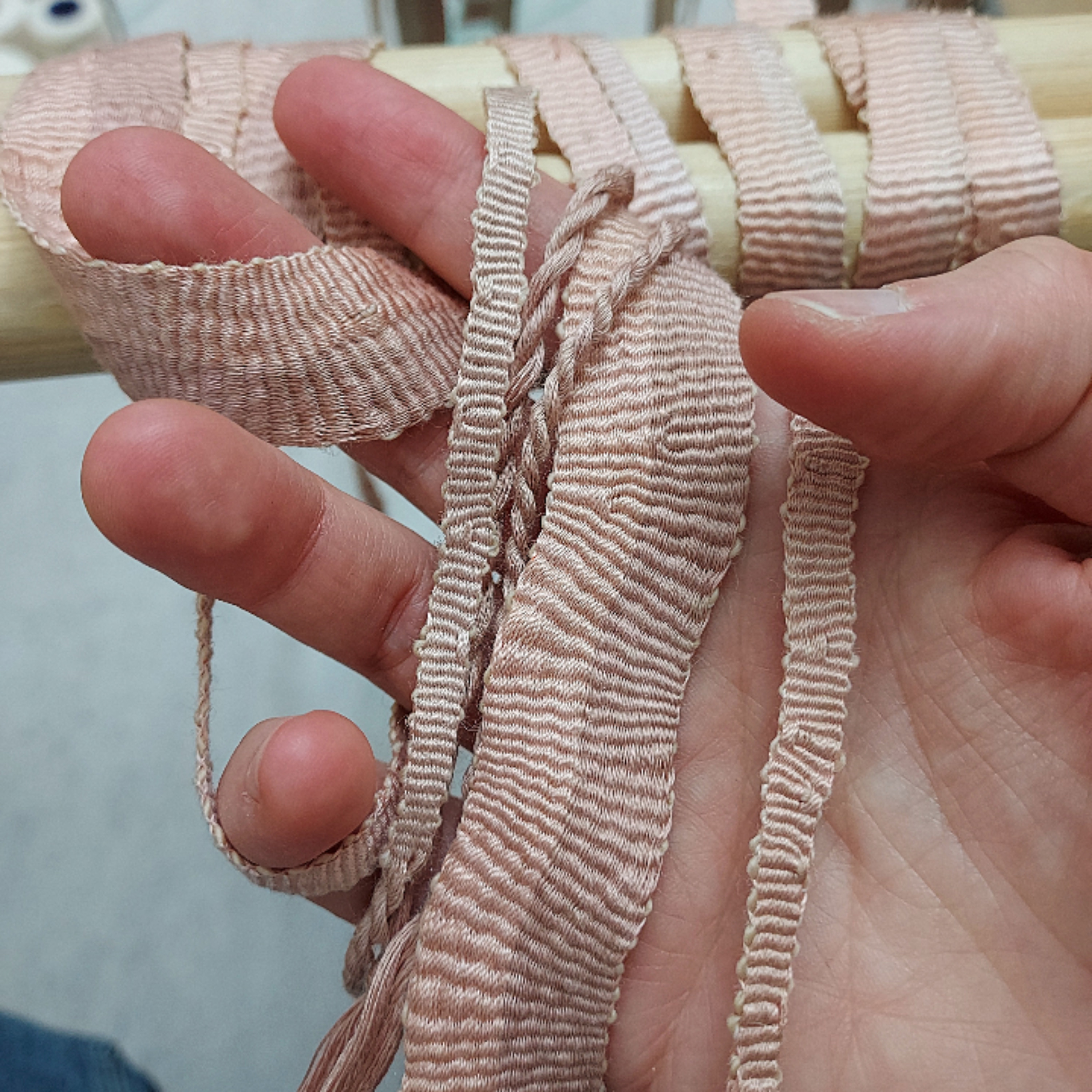Negotiation of Forces in Performative Weaving
DOI:
https://doi.org/10.7577/formakademisk.5411Keywords:
weaving, embodiment, craftAbstract
I am a textile artist that builds performative weaving constructions emphasizing the tensions in the reciprocal dialogue that occurs between body, tools and materials. This strategy has emerged from an intention to approach an embodied and immersive relationship with a weaving practice. How does a body adapt to a craft, and how does the craft change in response? All making, especially weaving, can be considered a modality of growth, and the body and any work produced in a craft relationship become a symbiotic, adaptive being. The textile is a life-sustaining extension and evolution of the human body. Our mutual dependence is the ground out of which I develop my projects. My research has settled into a generative weaving installation, designed to encourage the blurring of boundaries between body, loom and dyebath, fibers and pigments (the body becomes the tool, the material is the body, the material is the tool). The installation itself is woven as it is activated, made up of an unbroken silk band. The weaver is integrated through a modified backstrap loom, ancient technology that relies on muscular resistance for tension. To this end, the woven band loops around the waist, and around the weaving heddles, connecting the feet to them. The dyepot anchors the system to the room and to the body. If an element is out of balance, it will collapse. One can continually graft new threads onto this band, so in theory it could go on growing indefinitely. This ecosystem is perfectly calibrated to fit the weaver's body and circumstance, an enhanced, collaborative being, like a stone-age cyborg.
References
Clark, A. & Chalmers, D. J. (1998). The extended mind. Analysis 58(1), 7–19. https://doi.org/10.1093/analys/58.1.7
Ingold, T. (2000). The Perception of the Environment. Essays on Livelihood, Dwelling and Skill. On Weaving a Basket (pp.339–48). Routledge.
Malafouris, L. (2020). Thinking as “Thinging”: Psychology With Things. Current Directions in Psychological Science, 29(1), 3–8. 10.1177/0963721419873349.
Neimanis, A. (2017). Bodies of Water: Posthuman Feminist Phenomenology. 1-26. Bloomsbury Academic. https://doi.org/10.5040/9781474275415

Downloads
Published
How to Cite
Issue
Section
License
Copyright (c) 2023 Rosanna Vibe

This work is licensed under a Creative Commons Attribution-NoDerivatives 4.0 International License.
Authors who publish with this journal agree to the following terms:
- Authors retain copyright and grant the journal right of first publication with the work simultaneously licensed under a Creative Commons Attribution 4.0 License that allows others to share the work with an acknowledgement of the work's authorship and initial publication in this journal.
- Authors are able to enter into separate, additional contractual arrangements for the non-exclusive distribution of the journal's published version of the work (e.g., post it to an institutional repository or publish it in a book), with an acknowledgement of its initial publication in this journal.
- Authors are permitted and encouraged to post their work online (e.g., in institutional repositories or on their website) prior to and during the submission process, as it can lead to productive exchanges, as well as earlier and greater citation of published work (See The Effect of Open Access).
- The author(s) must manage their economic reproduction rights to any third party.
- The journal makes no financial or other compensation for submissions, unless a separate agreement regarding this matter has been made with the author(s).
- The journal is obliged to archive the manuscript (including metadata) in its originally published digital form for at least a suitable amount of time in which the manuscript can be accessed via a long-term archive for digital material, such as in the Norwegian universities’ institutional archives within the framework of the NORA partnership.
The material will be published OpenAccess with a Creative Commons 4.0 License which allows anyone to read, share and adapt the content, even commercially under the licence terms:
This work needs to be appropriately attributed/credited, a link must be provided to the CC-BY 4.0 licence, and changes made need to be indicated in a reasonable manner, but not in any way that suggests that the licensor endorses you or your use.



